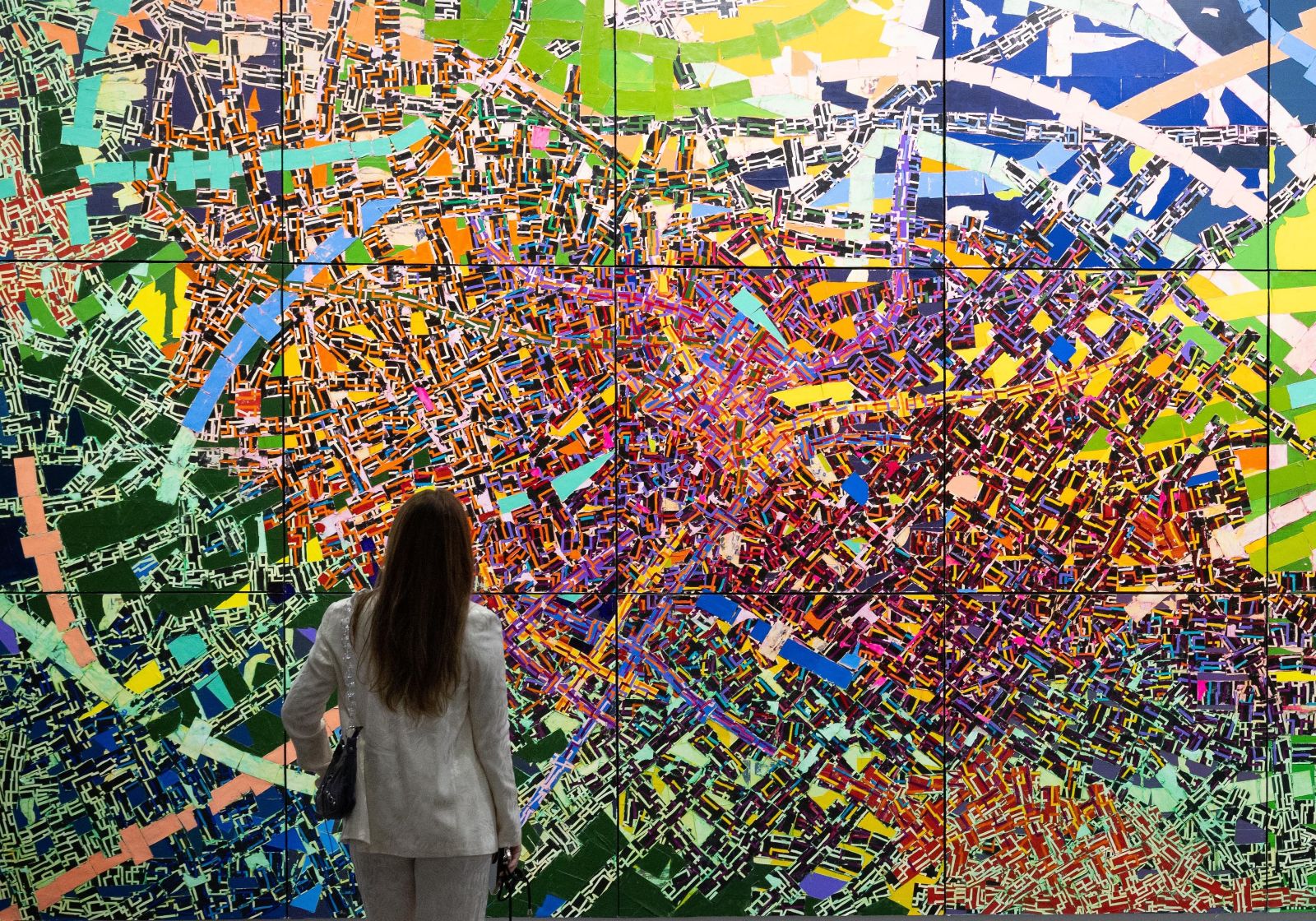The Art Basel and UBS Survey of Global Collecting 2025 shows that high net worth individuals are still actively involved in art, especially younger and female collectors.
In particular, the survey looks at the collecting habits of female HNW individuals, exploring the motivations of the next generation of art collectors. It also examines collectors’ attitudes towards uncertainty, analyzing risk preferences and sensitivities, and how these vary by age and gender.
The survey, conducted by Arts Economics in collaboration with UBS, draws on responses of 3,100 HNW individuals through the first half of 2025 across 10 markets: the US, the UK, mainland China, Hong Kong, France, Switzerland, Germany, Japan, Brazil, and Singapore. It explores their preferences, spending habits, event attendance, motivations for collecting, and interactions with artists, galleries, and institutions.
“Against a backdrop of heightened global economic uncertainty, this study provided a valuable opportunity to examine how collectors adapt to risk, focusing especially on differences by gender,” Clare McAndrew, author and founder, Arts Economics, said. “Contrary to the common stereotype of women as more risk-averse than men, the findings reveal that in the context of collecting, women are equally aware of potential risks yet often more willing to embrace them in practice – purchasing across a broader range of non-traditional mediums and actively supporting emerging and unknown artists.”
“Women also collected, and spent, more on works by female artists, a trend also evident among younger collectors. As wealth continues to shift both vertically and horizontally over the coming years, these trends are likely to foster greater balance and diversity in collecting in future,” she added.
The fine art world, and collecting and investing habits of HNW individuals, can be a barometer of sentiment about wealth and the economic outlook more generally. There is some debate on whether art is or is not a hedge against inflation and economic uncertainty. A number of banks, such as UBS, Citigroup and Deutsche Bank, offer access to art advice and in some cases, solutions around art-based lending, as part of their offerings.

Main findings include:
-- HNW individuals increased the share of wealth allocated to art in 2025: HNW collectors allocated an average of 20 per cent of their wealth to art in 2025, up from 15 per cent in 2024. Allocations rose with both wealth and collecting tenure, with ultra-high net worth individuals holding over $50 million in assets averaging 28 per cent, and those collecting for more than 20 years allocating 24 per cent. Gen Z collectors also reported higher-than-average allocations, at 26 per cent.
-- Purchasing habits diversified across media, artist categories, and buying channels: Paintings remained the most purchased medium and the largest by value . The share of individuals buying at art fairs rose to 58 per cent, while galleries and dealers remained the most used and highest spend channels. The share of collectors engaging in Instagram purchases increased to 51 per cent, and the share of those buying directly from artists more than doubled, as did spending via this channel. While spending leaned towards established artists, 66 per cent of HNW individuals bought works by artists they had newly discovered over the last 18 months, up 8 per cent year-on-year and a notable rise from 43 per cent in 2022.
-- Female collectors showed higher spending levels and displayed new collecting tendencies In 2024, women’s average spending on art and antiques was 46 per cent higher than men. In mainland China, HNW female collectors led expenditure, averaging more than twice that of men. Female collections included a higher share of works by female artists and greater openness to newly discovered talent.
-- Millennials and Gen Z showed the broadest cross-collecting appetites: Millennials led spending on decorative art, design, and jewelry, reflecting lifestyle-driven interests. Gen Z dominated in categories such as collectible handbags, sneakers, and luxury assets, with average sneaker spending nearly five times higher than other groups. In fine art, younger collectors engaged with a broader range of media, Gen Z had the highest activity rates in digital art, while Millennials favored prints, photography, and works on paper.
-- Family legacy remains central to collecting: Almost 90 per cent of Gen Z collectors who had inherited works had kept them, underlining the importance of family traditions in building collections. Of all respondents across generations, 80 per cent plan to pass their collections on to their children or spouses in the future.
-- Event attendance continued to stabilize post pandemic: In 2024, HNW individuals attended an average of 48 art-related events with women participating more than men and planning even higher attendance in 2025. Museum and gallery visits remained strong, while artist studio visits saw the biggest rise. Nearly all respondents plan to attend events in 2026, with younger collectors showing the highest intent to increase engagement.
-- Such HNW collectors signal confidence in the art market’s short-term future: Looking ahead, 40 per cent of them planned to buy more art in the next 12 months , and 84 per cent remained optimistic about the short-term future of the global art market. Selling intentions, by contrast, eased to 25 per cent . A quarter also planned to donate works, continuing a broader trend toward philanthropic giving.
Meanwhile, the US, China , and the UK together accounted for 58 per cent of the value of global imports of art and antiques in 2024, the study reveals, down by 5 per cent in share year-on-year, and their lowest combined share in 25 years.
Although the US continued to be the world’s largest center for trade in art, with 29 per cent of global imports by value, the UK’s imports fared better with their value increasing by 25 per cent in US-dollar terms and the global import share advancing to 10 per cent, restoring it to pre-pandemic levels but still well below 2010 when the UK accounted for 30 per cent of global imports.
